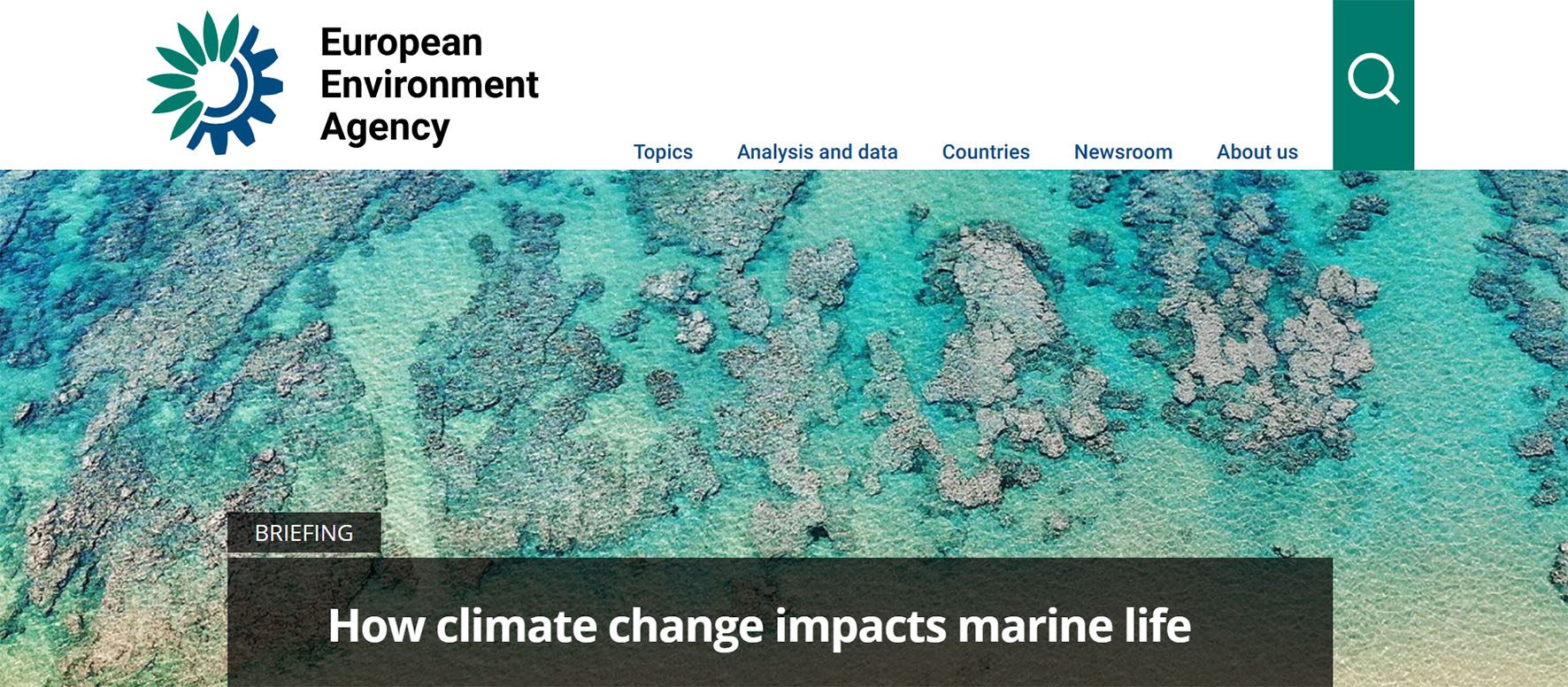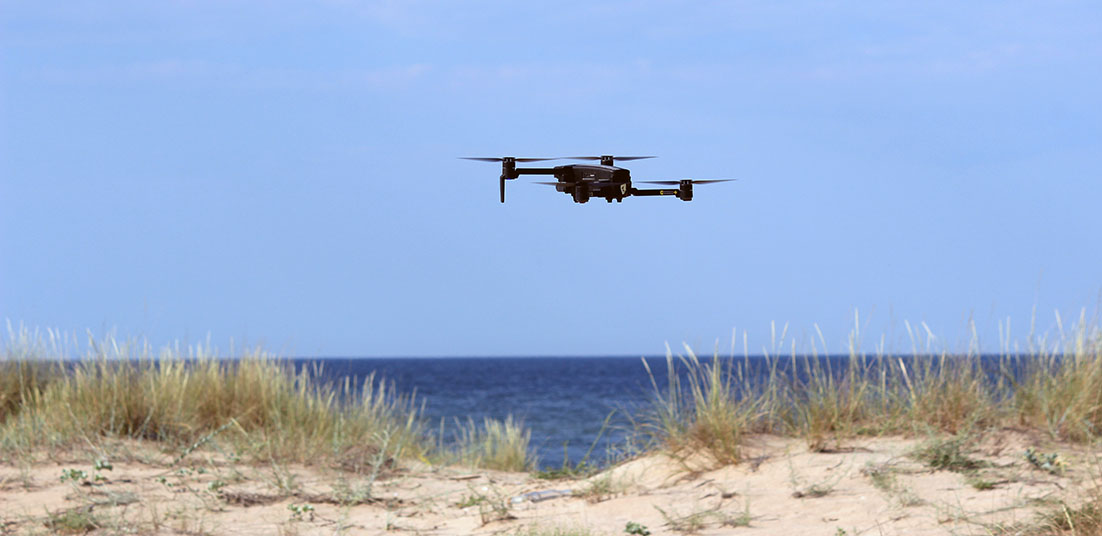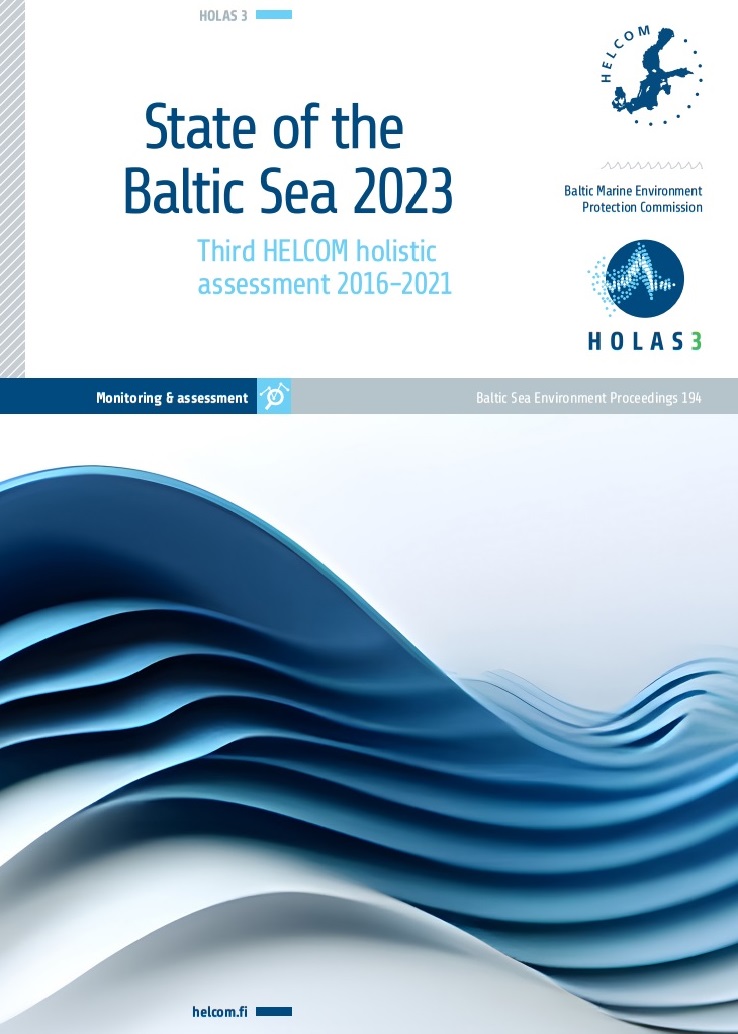News
EEA briefing: How climate change impacts marine life

This briefing summarises some of the ways in which climate change is impacting Europe’s marine ecosystems. It identifies how various ecosystem features are influenced by climate change and spotlights potential areas of concern. It also highlights areas where marine life may be more impacted by climate change compared with other areas. This work supports the recent integration of climate change as a key consideration in the Marine Strategy Framework Directive (MSFD). It does this by presenting a spatial description of the vulnerabilities of marine areas to climate change.
Key messages
• Europe’s marine areas and marine life are unequally vulnerable to climate change. Recent research indicates that climate change may account for up to half of the combined impacts on marine ecosystems.
• Semi-enclosed seas (Baltic and Adriatic for example), and shallow coastal areas are more vulnerable to climate change compared to deeper, offshore areas.
• Most species are in a degraded state across Europe’s seas. Bony fish are potentially the only positive exception.
• Bottom-living communities and fish are more vulnerable than highly mobile mammals and birds, for example. This potentially impacts the whole marine food web and dependent fisheries.
• Globally, oceans are changing. Ocean warming (0.88°C higher in 2011-2020 compared to 1850-1900), oxygen loss (down 3-4% by 2100) and ocean acidification (decreased pH by 30% in 2023 compared to 1700) may be occurring at a speed that may be too fast for species to adapt to the changes.
Read the full briefing here!
New MSP research paper is now available online: Land-Sea-Interactions in MSP and ICZM: A regional perspective from the Mediterranean and the Black Sea

We are happy to promote our newly published joint research paper in Marine Policy Journal (Elsevier): Land-Sea-Interactions in MSP and ICZM: A regional perspective from the Mediterranean and the Black Sea, a collaboration of:
• t-ELIKA, Venice, Italy
• Priority Actions Programme/Regional Activity Centre (PAP/RAC), Split, Croatia
• Prostorsko načrtovanje, Ljubljana, Slovenia
• Center for Coastal and Marine Study (CCMS), Varna, Bulgaria
• Planning Authority, Malta
• IUAV University of Venice, Department of Architecture and Arts, Planning and Climate Change Lab, Venice, Italy
• Institute of Marine Science (ISMAR), National Research Council (CNR), Venice, Italy
Land-sea interactions are relevant for marine spatial planning. Natural processes at the land-sea interface shape the terrestrial and the marine environment, influencing coastal and maritime activities in the area. Coastal and sea uses also hold numerous land-sea interactions, calling for infrastructures and services both on the land and the sea side.
In this paper the Guidelines for LSI in MSP proposed by UNEP/MAP PAP/RAC to provide practical support to land-sea interaction analysis within MSP are applied in four case studies: Bulgaria, Italy, Malta and Montenegro, within formal and informal marine spatial planning processes. The Guidelines have proved to be flexible, scalable and suitable to tiered approaches. They were adapted to the specificities of different planning, geographic, governance contexts, responding to the state and the needs of MSP development in the different countries, including non-EU ones.
Aberdeen University, School of Geosciences is calling for Competition Funded PhD Project: Developing an Innovative System for Sustainable Resilience to Coastal Erosion: A Demonstration Project for Coastal Golf Courses!

Dr D Green, Prof J McKinley (Deadline for applications: Wednesday, January 17, 2024). Competition fully funded, 42-month PhD project is part of the QUADRAT Doctoral Training Partnership (Students Worldwide)
All coastlines are subject to dynamic change through wave and wind action resulting in significant loss or gain of land through erosion and/or accretion. Many areas around the World are increasingly being exposed to such threats resulting in partial or complete loss of assets in the most severe cases. In the future, climate change will likely accelerate the rate of coastline change with rising sea levels and more frequent and energetic storms. Widespread evidence of climate change impacts on coasts around the world, when coupled with increasing demands being placed on dwindling management budgets, and the need to protect valuable coastal assets suggests the need for new, more cost-effective, approaches to local coastal management problems.
A focus on developing new, low-cost, and environmentally sustainable solutions will be important. This research project will design, model, implement and test a novel coastal engineering solution for the protection of coastal assets at risk, specifically golf courses. A hybrid-protection solution using sustainable materials bound into a flexible and tethered structure, allowing wind- and water-borne material to penetrate, and be captured by the structure, will be developed, and tested. This will be a low-cost structure easily installed, maintained, and managed at the local community level.
State of the Baltic Sea 2023 Report is out!

Achieving good ecosystem health is a core area of collaboration among countries bordering the Baltic Sea, which make up the Contracting Parties to HELCOM. Pressures from various human activities have an impact on Baltic Sea ecosystems, affecting the status of species and habitats, as well as human well-being.
The close links between different parts of the Baltic Sea mean that actions often have to be coordinated across national borders for environmental measures to be effective. Environmental pressures vary spatially and their importance can change over time, depending on how human activities develop and on how efficiently we are able to manage and minimize negative impacts.
